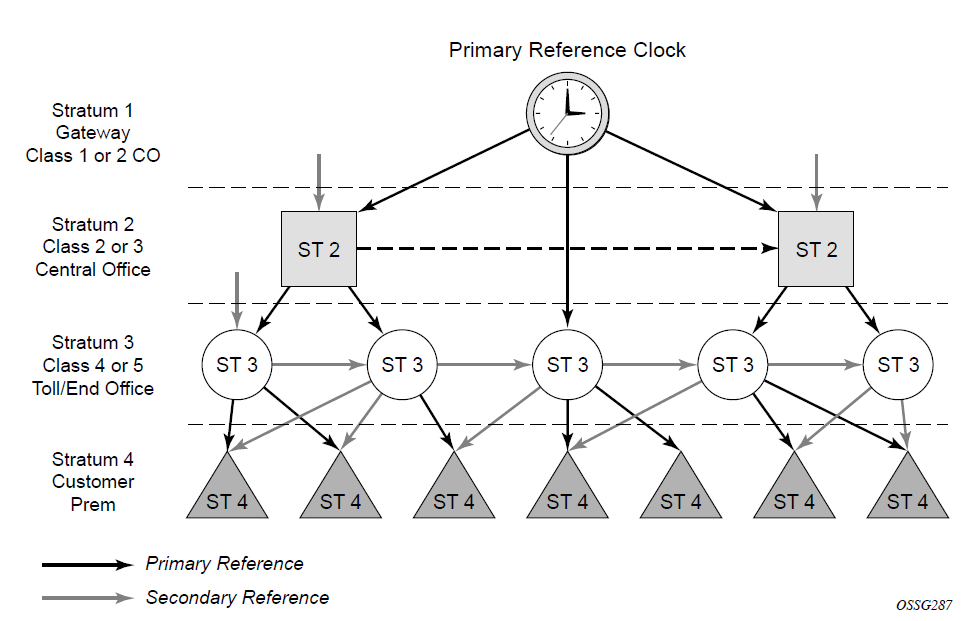See the information in this section andsee the 7210 SAS OS Software Release Notes 11.0Rx for information about network synchronization options supported on each 7210 SAS platform.
This section describes the network synchronization capabilities available on7210 SAS platforms. These capabilities involve multiple approaches to network timing, including Synchronous Ethernet, PTP/1588v2, adaptive timing, and others. These features address barriers to entry as follows:
provide synchronization quality required by mobile networks, such as radio operations and circuit emulation services (CES) transport
augment and potentially replace the existing (SONET/SDH) timing infrastructure and deliver high quality network timing for time-sensitive wireline applications
Synchronous Ethernet and IEEE1588v2 PTP are not supported on virtual chassis (VCs).
Network synchronization is commonly distributed in a hierarchical PTP topology at the physical layer, as shown in the following figure.

The architecture shown in the preceding figure provides the following benefits:
It limits the need for high quality clocks at each network element and only requires that they reliably replicate input to remain traceable to its reference.
It uses reliable physical media to provide transport of the timing signal. It does not consume any bandwidth and requires limited additional processing.
The synchronization network is designed so a clock always receives timing from a clock of equal or higher stratum or quality level. This ensures that if an upstream clock has a fault condition (for example, loses its reference and enters a holdover or free-run state) and begins to drift in frequency, the downstream clock will be able to follow it. For greater reliability and robustness, most offices and nodes have at least two synchronization references that can be selected in priority order (such as primary and secondary).
Further levels of resiliency can be provided by designing a capability in the node clock that will operate within prescribed network performance specifications without any reference for a specified timeframe. A clock operating in this mode is said to hold the last known state over (or holdover) until the reference lock is once again achieved. Each level in the timing hierarchy is associated with minimum levels of network performance.
Each synchronization capable port can be independently configured to transmit data using the node reference timing. In addition, some TDM channels can use adaptive timing or loop timing.
Transmission of a reference clock through a chain of Ethernet equipment requires that all equipment supports Synchronous Ethernet. A single piece of equipment that is not capable of performing Synchronous Ethernet breaks the chain. Ethernet frames will still get through but downstream devices should not use the recovered line timing because it will not be traceable to an acceptable stratum source.